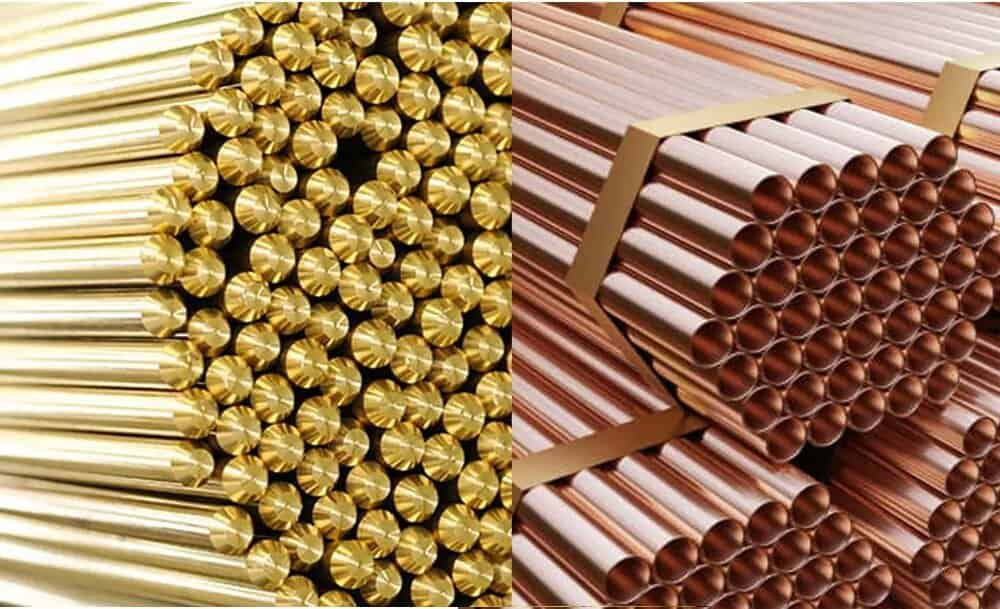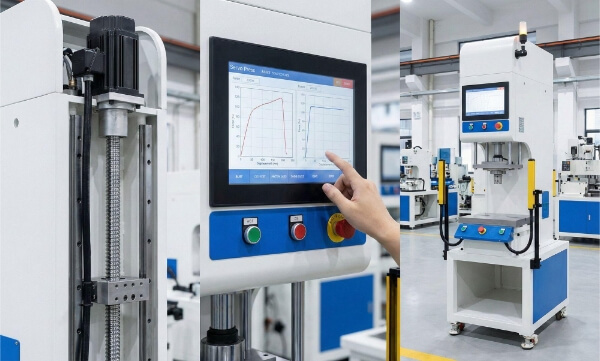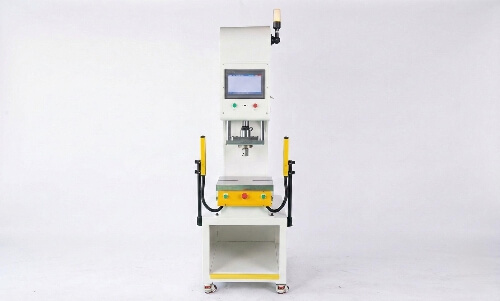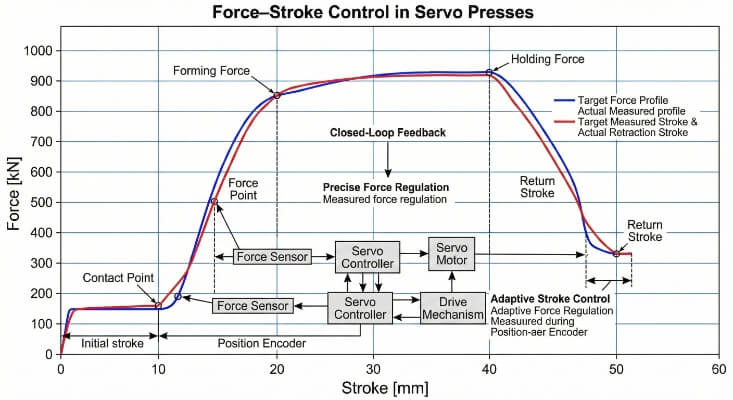Manufacturing custom metal parts brings unique challenges. Every project demands specific material properties, and choosing between red brass and yellow brass often stumps even experienced engineers. While both metals offer excellent machinability and corrosion resistance, their distinct properties affect everything from cost to final performance.
Want to make an informed decision that could save you time and money? Let’s explore how these metals perform in real-world applications.

What Is Red Brass Vs Yellow Brass?
The industry has developed various brass alloys to meet specific manufacturing needs. Red and yellow brass represent two distinct variations, each offering unique properties based on their copper-zinc ratios.
What Is Red Brass?
Red brass emerged as manufacturers sought enhanced material properties for specialized applications. This copper-zinc-tin alloy, sometimes called gunmetal, contains a minimum of 85% copper and approximately 15% zinc. The high copper ratio creates its characteristic reddish color.
Despite its robust composition, red brass requires careful consideration in marine settings. Though the zinc content is lower than that of yellow brass, it can still react with seawater. This reaction might lead to dezincification, leaving behind porous copper. However, for non-marine applications, red brass delivers exceptional performance and durability.
What Is Yellow Brass?
Yellow brass has the same base elements as red brass but significantly different proportions. This alloy features up to 65% copper and roughly 35% zinc—triple the zinc content of red brass. The increased zinc transforms the metal’s appearance from reddish to yellow.
The higher zinc content creates excellent elasticity, ductility, and malleability. These properties make yellow brass particularly suitable for machining processes, including CNC operations. However, the increased zinc makes it more susceptible to corrosion than its red counterpart.
Chemical Composition of Red Brass Vs Yellow Brass
Red brass shows a notably different makeup from its yellow counterpart. The critical factor lies in the copper-to-zinc ratio, which shapes their behavior during manufacturing and end-use performance.
The table below highlights the differences in their chemical content.
| Chemical Properties | Red Brass (%) | Yellow Brass (%) |
|---|---|---|
| Copper | 85-90% | 60-80 |
| Zinc | 5-10% | 30-40% |
| Tin | 2 min | 1 max |
| Lead | 1 max | 1 max |
| Iron | 0.1 | 0.1 |
| Manganese | 0.5 | 0.5 |
| Arsenic | 0.01 max | 0.01 max |
Physical Properties
Each type of brass exhibits distinct physical traits that influence its selection for specific applications. These differences stem from its unique chemical composition.
Color and Appearance
Due to its high copper content, red brass displays a warm, reddish-brown color. Over time, the surface takes on a rich patina, darkening slightly but maintaining its appealing aesthetic.
Yellow brass shows a bright, golden color that many associate with traditional brass. Its higher zinc content creates this lighter appearance, making it popular for decorative elements.
Density and Weight
Red brass weighs about 8.7 grams per cubic centimeter. Its higher density is due to its greater copper content.
Yellow brass measures around 8.4 grams per cubic centimeter. Its lower density is due to zinc being lighter than copper, making it a slightly lighter option for weight-sensitive projects.
Melting Points
Red brass melts at approximately 1,900°F (1,038°C), which is elevated due to the higher copper ratio. Yellow brass liquefies at a lower temperature—around 1,710°F (932°C).
Conductivity
Red brass conducts electricity better than yellow brass. Its conductivity reaches about 28% IACS (International Annealed Copper Standard), while yellow brass conducts at roughly 26% IACS.
Heat Conductivity
Red brass transfers heat more efficiently than yellow brass. It conducts at about 92 BTU/(hr·ft²·°F/inch). Yellow brass conducts at approximately 70 BTU/(hr·ft²·°F/inch).
Mechanical Properties
The mechanical properties of red and yellow brass determine their suitability for various manufacturing processes and applications. Their distinct characteristics affect everything from production methods to long-term performance.
Strength and Durability
Red brass exhibits superior tensile strength, reaching up to 50,000 PSI in its standard form. The higher copper content creates better fatigue resistance and hardness. This metal maintains its properties well under stress and repeated loading.
Yellow brass shows slightly lower tensile strength at around 43,000 PSI. However, it compensates with better ductility. The metal responds well to cold working, which can significantly increase its strength.
Corrosion Resistance
Red brass stands out in corrosion resistance. Its higher copper content creates better protection against dezincification – a standard failure mode in brass components exposed to water.
Yellow brass offers moderate corrosion resistance. While adequate for many applications, it requires more attention in harsh environments.
Workability and Machinability
Red brass machines predictably and create clean cuts. The material responds well to standard tooling and maintains tight tolerances. However, its higher strength requires more power during machining operations.
Yellow brass excels in machinability. The higher zinc content improves chip formation and reduces tool wear.
Red Brass Vs Yellow Brass: Difference in Cost
Raw material costs play a significant role in metal selection. The red and yellow brass price gap affects initial investment and long-term value.
Red brass costs more due to its higher copper content. Current market prices are roughly 30-40% above yellow brass. The stability of red brass pricing tends to follow copper market trends closely.
Yellow brass offers a more budget-friendly option. Its increased zinc content—about 35%—helps reduce material costs significantly. Market fluctuations in zinc prices affect yellow brass less dramatically than copper prices influence red brass.
Red Brass Vs Yellow Brass Applications
Each type of brass serves specific roles across various industries. Their distinct properties create natural fits for different applications in manufacturing and design.
Red Brass Applications:
Marine Equipment
- Boat fittings and hardware
- Underwater valve components
- Propeller shafts
- Ship deck hardware
Plumbing Systems
- High-end water valves
- Hot water fittings
- Steam pipes
- Pressure regulators
Outdoor Architecture
- Decorative railings
- Light fixtures
- Door handles
- Weather-exposed trim
- Monument plaques
Yellow Brass Applications:
Electrical Components
- Terminal blocks
- Switch parts
- Connectors
- Fuse holders
Musical Instruments
- Brass instruments
- Valves and slides
- Mouthpieces
- Tuning mechanisms
Indoor Hardware
- Lock components
- Doorknobs
- Cabinet hardware
- Lamp fixtures
- Furniture trim
Red Brass vs Yellow Brass Comparison Table
| Feature | Red Brass | Yellow Brass |
|---|---|---|
| Color | Reddish-brown | Golden yellow |
| Density | 8.7 g/cm³ | 8.4 g/cm³ |
| Melting Point | 1,900°F (1,038°C) | 1,710°F (932°C) |
| Electrical Conductivity | 28% IACS | 26% IACS |
| Heat Conductivity | 92 BTU/(hr·ft²·°F/inch) | 70 BTU/(hr·ft²·°F/inch) |
| Tensile Strength | Up to 50,000 PSI | Up to 43,000 PSI |
| Corrosion Resistance | Superior | Moderate |
| Machinability | Good | Excellent |
| Workability | Moderate | High |
| Raw Material Cost | 30-40% higher | More economical |
| Long-term Value | Better durability, less replacement | May need more maintenance |
| Best Applications | Marine environments, plumbing systems, critical components | Decorative pieces, high-volume production, intricate shapes |
Red Brass Vs Yellow Brass: Which One to Choose?
Your choice between red and yellow brass should align with your project needs. Several vital factors guide this decision process.
When corrosion resistance is a top priority, choose red brass. Its higher copper content makes it the superior choice for marine equipment, plumbing components, and outdoor fixtures.
Choose yellow brass for high-volume production runs where cost matters. Its better machinability speeds up production and reduces tool wear.
Budget constraints often influence the final decision. While yellow brass costs less initially, factor in the lifetime of your product. Red brass might cost more upfront but requires less maintenance and fewer replacements.
Your choice also affects the production method. Yellow brass flows better in casting and responds well to cold forming. Red brass gives better results in applications requiring threading or mechanical assembly.
Conclusion
Metal selection directly impacts your project’s success. Though more expensive, red brass shines in applications demanding strength and corrosion resistance. Yellow brass delivers cost-effective solutions for high-volume production and decorative pieces. Base your choice on the specific demands of your application, manufacturing process, and budget requirements.
Do you need a reliable sheet metal parts manufacturer? Shengen is the place to go. We specialize in sheet metal laser cutting, bending, surface finish, and CNC Machining. Reach out to Shengen Today and seek help from professionals!
FAQs
Which brass is better for plumbing applications?
Red brass leads the way in plumbing systems. The higher copper content creates superior resistance to dezincification and corrosion in water exposure. This metal maintains its integrity in both hot and cold water systems. Its proven track record in plumbing spans decades, particularly in areas with aggressive water conditions.
Can red brass be used in electrical components?
Red brass works well in electrical applications. Its 28% IACS conductivity rating makes it suitable for electrical terminals and connectors. The material combines good conductivity with mechanical strength. However, pure copper is the preferred choice when maximum conductivity matters most.
What is better, red brass or yellow brass?
Neither brass type claims absolute superiority – each excels in specific applications. Red brass dominates in corrosive environments and critical components where failure risks high costs. Yellow brass proves ideal for high-volume production and intricate designs where cost efficiency matters. The “better” choice depends entirely on your application requirements and constraints.
Hey, I'm Kevin Lee

For the past 10 years, I’ve been immersed in various forms of sheet metal fabrication, sharing cool insights here from my experiences across diverse workshops.
Get in touch

Kevin Lee
I have over ten years of professional experience in sheet metal fabrication, specializing in laser cutting, bending, welding, and surface treatment techniques. As the Technical Director at Shengen, I am committed to solving complex manufacturing challenges and driving innovation and quality in each project.




